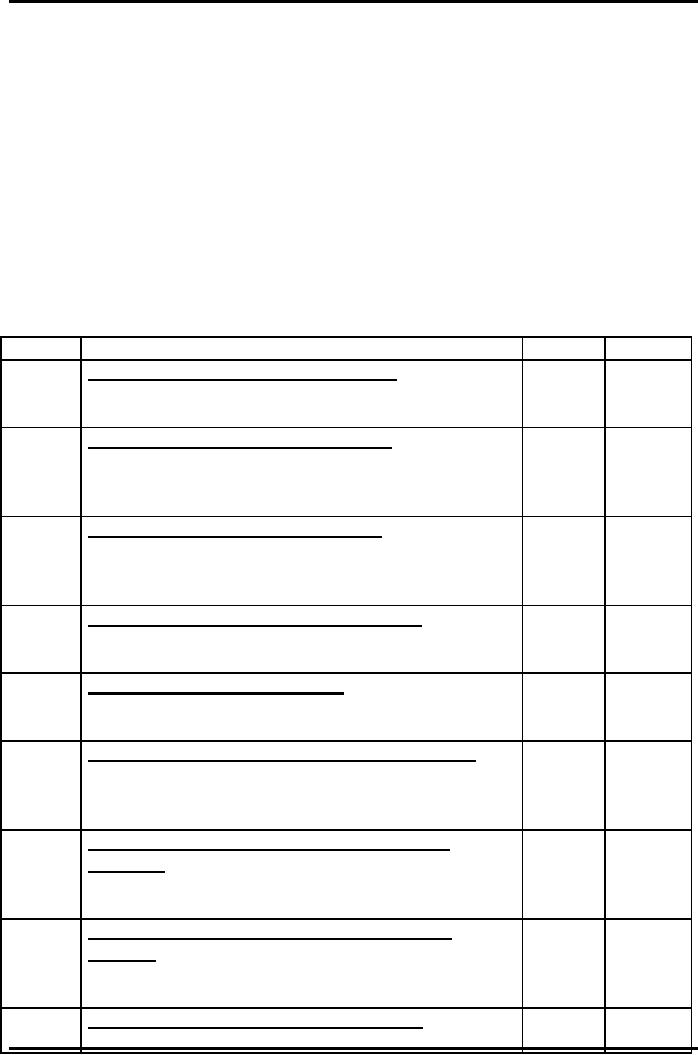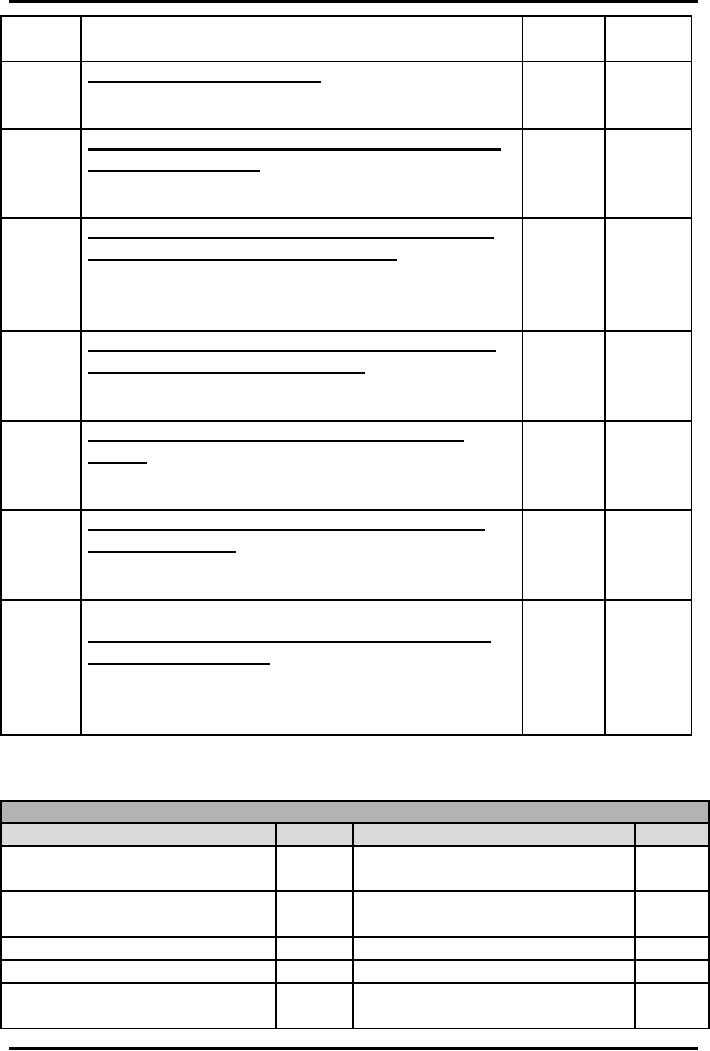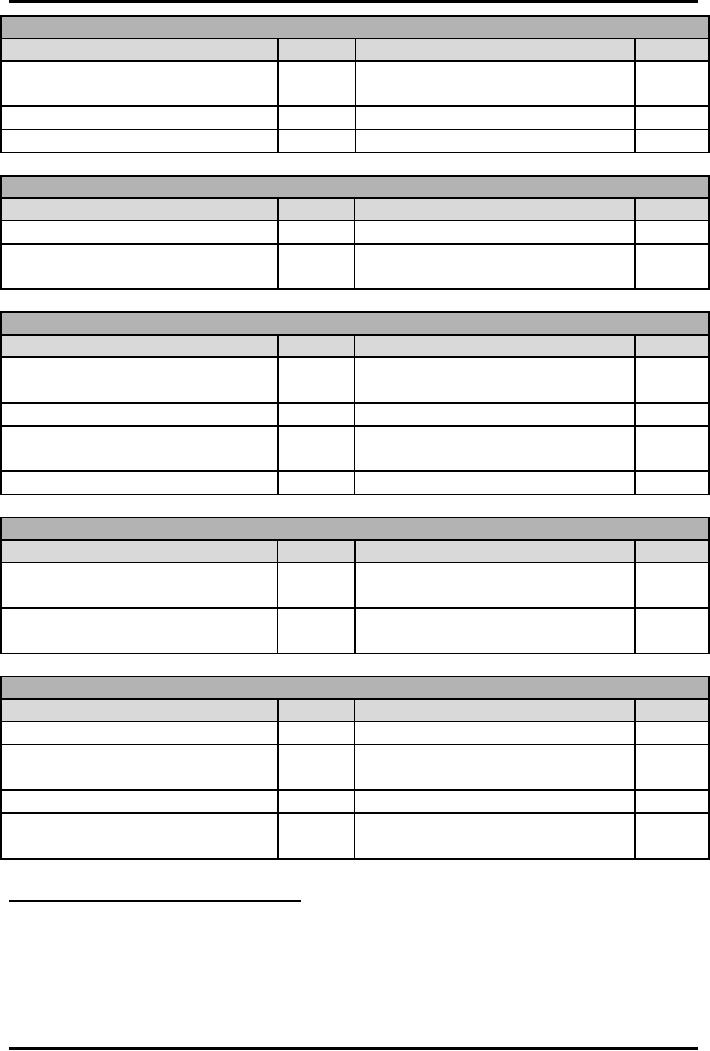 |
BRANCH ACCOUNTING - STOCK AND DEBTOR SYSTEM |
| << BRANCH ACCOUNTING |
| STOCK AND DEBTORS SYSTEM >> |

Advance
Financial Accounting
(FIN-611)
VU
LESSON
#13
BRANCH
ACCOUNTING - STOCK AND DEBTOR
SYSTEM
Stock
and Debtors system is generally
used when the goods are
sent to the branch at
pro-forma
invoice price and the size
of the branch is large. Under
this system, the
branch
maintains a few central accounts to
exercise greater control
over the branch
stock
and other related expenses.
These accounts usually
are:
1.
Branch
Stock Account
2.
Branch
Debtors Account
3.
Branch
Expenses Account
4.
Branch
Adjustment Account
5.
Goods
Sent to Branch
Account
6.
Branch
Stock Reserve Account
Branch
Stock Account
This
account is on the pattern of a
stock account. The account
helps the Head Office
in
maintaining
an effective control over
the Branch Stock and tells
about shortage and
surplus
in the branch stock because
of the difference between
the pro-forma invoice
price
and the selling
price.
Unlike
traditional accounting practice,
branch stock a/c is always
maintained on the
selling
price or pro-forma invoice
price. Selling price is used
to record the goods
sold
by
the branch to its customer
and goods returned by the
branch customers. Rest of
the
information
(even opening and closing
balances) in branch stock a/c is
recorded at
pro-forma
invoice price.
Branch
Debtors Account
Branch
debtors' a/c is maintained in the
traditional manner to record
transactions in
between
branch and its credit
customers.
Branch
Expense Account
The
purpose of maintaining this
account is nothing but the
compile all branch
expenses
at one place. This will
include all types of expenses
i.e. cash based
expenses
and
receivables based
expenses.
Branch
Adjustment Account
Branch
adjustment a/c replaces the
branch income statement
(profit & loss a/c).
This
is
the account in which all expenses and
losses are closed along with
the margin that is
a
difference between cost and
the selling price. This
difference is split into two; one
is
termed
as "surplus" that comes from the
branch stock a/c representing
the difference
between
selling price and pro-forma
invoice price, the second is
termed as "loading"
that
represents the difference
between pro-forma invoice
price and cost. This
loading
is
calculated on opening and closing
stock balances and also on
the net of the
goods
sent
branch.
60

Advance
Financial Accounting
(FIN-611)
VU
Goods
Sent to Branch Account
This
is a supporting account, which is
maintained to show second effects of
the goods
sent
to branch and the goods
returned from branch at pro-forma
invoice price.
Although
the goods sent to and
returned form the branch
should be adjusted in
the
purchases
a/c of the head office, but as we know
that the branch stock a/c is
not
maintained
at cost price, therefore,
second effect of goods sent
to and returned from
branch
is not recorded directly into the
purchases a/c instead this
second effect is
recorded
into the goods sent to
branch a/c which after adjustment of
the loading is
finally
closed into the purchases
a/c.
Branch
Stock Reserve
Account
This
is contra to branch stock
account. In this account
opening and closing balance
of
loading
on branch stock is
maintained.
ACCOUNTING
ENTRIES IN THE BOOKS OF
HEAD
OFFICE
Sr
no.
JOURNAL
ENTRIES
Debit
Credit
For
Goods Sent to Branch (at
Invoice)
Branch
Stock Account (Dr)
xxx
(1)
Goods
Sent To Branch Account
(Cr)
xxx
For
Goods Sold At Branch On
Credit
Branch
Debtors Account (Dr)
(At
xxx
(2)
Selling
Price)
xxx
Branch
Stock Account (Cr)
For
Goods Sold At Branch For
Cash
Branch
Cash Account (Dr)
(At
xxx
(3)
Selling
Price)
xxx
Branch
Stock Account (Cr)
For
Cash Received From Branch
Debtors
Branch
Cash Account (Dr)
xxx
(4)
Branch
Debtors Account (Cr)
xxx
For
Goods Returned by
Branch
Branch
Stock Account (Dr)
xxx
(5)
Branch
Debtors Account (Cr)
xxx
For
Goods Returned by Branch To
Head Office
Goods
Sent To Branch Account
(Dr)
xxx
(6)
(At
Invoice)
xxx
Branch
Stock Account (Cr)
For
Cash Sent By Head Office to
Branch For
Expenses
xxx
(7)
Branch
Expenses Account (Dr)
xxx
Cash
Account (Cr)
For
Bad Debts/ discount Allowed
To Branch
Debtors
xxx
(8)
Branch
Debtors Account (Dr)
xxx
Branch
Debtors Account (Cr)
For
Shortage/ Shrinkage in Branch
Stock
(9)
Branch
Adjustment Account
(Dr)
xxx
61

Advance
Financial Accounting
(FIN-611)
VU
Branch
Stock Account
xxx
(Cr)
For
Surplus In Branch
Stock
Branch
Stock Account (Dr)
xxx
(10)
Branch
Adjustment Account
(Cr)
xxx
For
Closing Branch Expenses Account
Into Branch
Adjustment
Account
xxx
(11)
Branch
Adjustment Account
(Dr)
xxx
Branch
Expenses Account (Cr)
For
Transfer of Opening Stock
Reserve (Loading)
Into
The Branch Adjustment
Account
Branch
Stock Reserve Account (Dr)
(with
loading
xxx
(12)
of
opening
Branch
Adjustment Account
(Cr)
xxx
For
Creating Stock Reserve on
Closing Balance of
Stock
(Loading on Closing
Stock)
(13)
Branch
Adjustment Account
(Dr)
xxx
Branch
Stock Reserve (Cr)
xxx
For
Loading on Net Amount of
Goods Sent to
Branch
xxx
(14)
Goods
Sent to Branch Account
(Dr)
xxx
Branch
Adjustment Account
(Cr)
For
Closing Goods Sent To Branch
Account Into
Purchase
Account
(15)
Goods
Sent To Branch Account
(Dr)
xxx
Purchases
Account (Cr)
xxx
For
Closing the Branch
Adjustment Account
Into
Profit
& Loss Account
Branch
Adjustment Account (Dr)
(with the
(16)
xxx
amount
of profit on branch)
Profit
& Loss Account
(Cr)
xxx
LEDGER
ACCOUNTS
IN THE MAIN
LEDGER OF HEAD OFFICE
BRANCH
STOCK ACCOUNT
Particulars
Debit
Particulars
Credit
Balance
Brought Forward (At
******
Branch
Debtors (Credit
Sales)
Jef
(2)
Invoice)
(Selling
Price)
Goods
Sent to Branch (At
Jef (1)
Branch
Cash (Cash
Sales)(Selling
Jef(3)
Invoice)
Price)
Branch
Debtors (Sales
Return)
Jef
(5)
Goods
Sent to Branch
(Return)
Jef(6)
Branch
Adjustment (Surplus)
Jef
(10) Branch Adjustment
(Shortage)
Jef(9)
Balance
Carried Forward (At
******
Invoice)
62

Advance
Financial Accounting
(FIN-611)
VU
GOODS
SENT TO BRANCH ACCOUNT
Particulars
Debit
Particulars
Credit
Branch
Stock (Credit Sales)
Jef(6)
Branch
Stock (Goods Sent) (At
Jef(1)
Invoice)
Branch
Adjustment (Loading)
Jef(14)
Purchases
(Balancing Figure)
Jef(15)
BRANCH
EXPENESE ACCOUNT
Particulars
Debit
Particulars
Credit
Cash
(Expense)
Jef(7)
Branch
Adjust (Closing)
Jef(11)
Branch
Debtors
(Discount
Jef(8)
Allowed +
Bad Debts)
BRANCH
DEBTORS ACCOUNT
Particulars
Debit
Particulars
Credit
Opening
Balance
Brought
******
Cash
Received
Jef(4)
Forward
Branch
Stock (Credit Sales)
Jef(2)
Branch
Stock (Sales Return)
Jef(5)
Branch
Expense (Bad Debts +
Jef(8)
Discount
Allowed)
Balance
Brought Forward
******
STOCK
RESERVE ACCOUNT
Particulars
Debit
Particulars
Credit
Branch
Adjustment (Transfer of
Jef(12)
Opening
Stock Reserve Brought
******
Opening
Balance)
Forward
Closing
Stock Reserve Balance
******
Branch
Adjustment (Closing
Jef(13)
c/f
Loading)
BRANCH
ADJUSTMENT ACCOUNT
Particulars
Debit
Particulars
Credit
Branch
Stock (Shortage)
Jef
(9)
Branch
Stock (Surplus)
Jef(10)
Branch
Expense (Closed)
Jef
(11)
Branch
Stock Reserve
(Opening
Jef(12)
Balance)
Branch
Stock Reserve
(Closing)
Jef
(13)
Goods
Sent to Branch
(Loading)
Jef(14)
Profit
&
Loss
Account
Jef (16)
(Balancing
Figure)
Note:
(Jef = Journal Entry
Reference)
63
Table of Contents:
- ACCOUNTING FOR INCOMPLETE RECORDS
- PRACTICING ACCOUNTING FOR INCOMPLETE RECORDS
- CONVERSION OF SINGLE ENTRY IN DOUBLE ENTRY ACCOUNTING SYSTEM
- SINGLE ENTRY CALCULATION OF MISSING INFORMATION
- SINGLE ENTRY CALCULATION OF MARKUP AND MARGIN
- ACCOUNTING SYSTEM IN NON-PROFIT ORGANIZATIONS
- NON-PROFIT ORGANIZATIONS
- PREPARATION OF FINANCIAL STATEMENTS OF NON-PROFIT ORGANIZATIONS FROM INCOMPLETE RECORDS
- DEPARTMENTAL ACCOUNTS 1
- DEPARTMENTAL ACCOUNTS 2
- BRANCH ACCOUNTING SYSTEMS
- BRANCH ACCOUNTING
- BRANCH ACCOUNTING - STOCK AND DEBTOR SYSTEM
- STOCK AND DEBTORS SYSTEM
- INDEPENDENT BRANCH
- BRANCH ACCOUNTING 1
- BRANCH ACCOUNTING 2
- ESSENTIALS OF PARTNERSHIP
- Partnership Accounts Changes in partnership firm
- COMPANY ACCOUNTS 1
- COMPANY ACCOUNTS 2
- Problems Solving
- COMPANY ACCOUNTS
- RETURNS ON FINANCIAL SOURCES
- IASB’S FRAMEWORK
- ELEMENTS OF FINANCIAL STATEMENTS
- EVENTS AFTER THE BALANCE SHEET DATE
- PROVISIONS, CONTINGENT LIABILITIES AND CONTINGENT ASSETS
- ACCOUNTING POLICIES, CHANGES IN ACCOUNTING ESTIMATES AND ERRORS 1
- ACCOUNTING POLICIES, CHANGES IN ACCOUNTING ESTIMATES AND ERRORS 2
- BORROWING COST
- EXCESS OF THE CARRYING AMOUNT OF THE QUALIFYING ASSET OVER RECOVERABLE AMOUNT
- EARNINGS PER SHARE
- Earnings per Share
- DILUTED EARNINGS PER SHARE
- GROUP ACCOUNTS
- Pre-acquisition Reserves
- GROUP ACCOUNTS: Minority Interest
- GROUP ACCOUNTS: Inter Company Trading (P to S)
- GROUP ACCOUNTS: Fair Value Adjustments
- GROUP ACCOUNTS: Pre-acquistion Profits, Dividends
- GROUP ACCOUNTS: Profit & Loss
- GROUP ACCOUNTS: Minority Interest, Inter Co.
- GROUP ACCOUNTS: Inter Co. Trading (when there is unrealized profit)
- Comprehensive Workings in Group Accounts Consolidated Balance Sheet